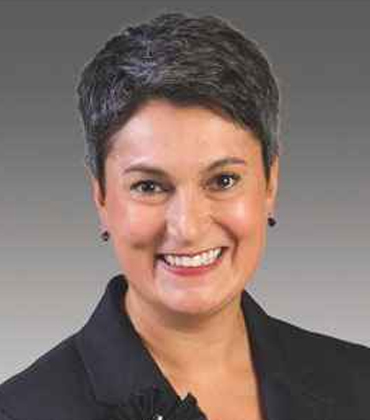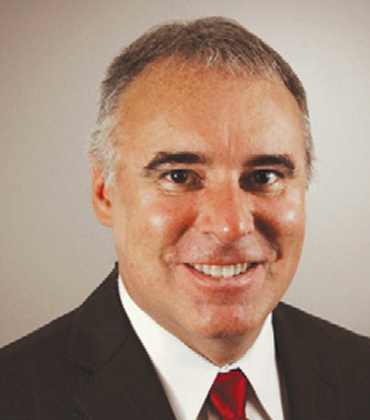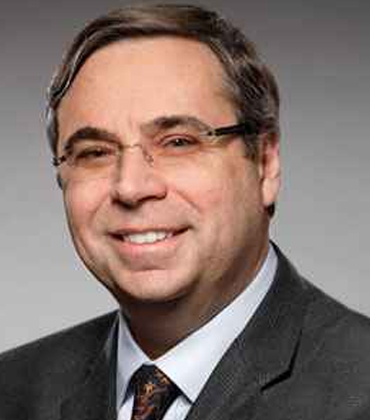THANK YOU FOR SUBSCRIBING
As customers demand more agile and flexible financial services, institutions turn to next-generation platforms to remain competitive. Skaleet, a Paris-based company offering its cutting-edge SaaS Core Banking Solutions, is leading the next-gen core banking revolution. Skaleet’s modular, cloud-based solution enables digital banks, payment institutions, and traditional banks to rapidly launch new products, enhance customer experiences, and reduce operational costs. By offering a flexible, pay-as-you-go model, Skaleet allows financial institutions to drive innovation while leaving behind the limitations of outdated, one-size-fits-all legacy systems. This model alleviates the burden of substantial upfront capital investments, ensuring these entities focus on innovation and customer engagement. Established banks also reap significant benefits from the pricing structure, providing a strategic pathway for modernization and mitigating the financial strain typical of traditional methods. “We believe that the future of banking lies in empowering institutions to innovate without constraints. Our platform is designed to remove the barriers to transformation,” states Martin Della Chiesa, Skaleet’s Co-CEO. With over 30 customers in 15 countries, Skaleet has built a reputation for delivering reliable solutions that meet the needs of traditional and non-incumbent financial players. Its clients range from neo-banks and embedded finance players to large traditional banks looking to modernize operations. Modular, Cloud-Based Core Banking with Cutting-edge Capabilities Skaleet’s innovative modular product catalog enables financial institutions to tailor services to their clients' evolving needs. Unlike traditional monolithic systems that require banks to invest in entire product suites, its modular approach allows institutions to choose and implement only the features they need. For instance, a digital bank can introduce a new product rapidly, or a traditional bank can seamlessly integrate additional features to elevate customer experiences-accomplishing all this without the protracted development cycles associated with legacy systems. Built with an API-first, event-driven architecture, Skaleet’s platform seamlessly integrates with a bank’s existing infrastructure. It also facilitates a better connection between internal systems and third-party services. In an increasingly complex financial ecosystem, this integration is vital for institutions seeking to adapt to evolving regulatory requirements, shifting customer expectations, and rapid technological advancements. Skaleet also offers a powerful payment engine. It supports various payment services with a 360-degree view of customer accounts and product offerings. The platform equips banks with all the tools they need to operate efficiently in today’s fast-paced financial landscape. Solving Real-World Challenges for the Financial Sector “Whether assisting a large traditional bank in expanding into a new market or enabling a fintech startup to scale rapidly, our solutions are designed to address two key pain points-speed to market and operational efficiency,” adds Della Chiesa.
A leader in merchant account services, Corepay has developed a strong reputation for providing reliable merchant services to a wide range of merchants, offering solutions for all levels of risk. Most processing solutions make life difficult for high-risk merchants, especially regarding price. Corepay always strives to ensure that pricing is transparent so that there are no surprises when viewing your month-end processing statement. “Our journey is rooted in a profound understanding of the dynamic landscape of digital payments, and our mission is to empower businesses and consumers with seamless, secure, and user-friendly payment services,” says Armando del Riego, COO. Corepay provides a comprehensive suite of payment processing services, including direct merchant accounts, a full stack proprietary payment gateway, and e-commerce integrations with the leading platforms, such as Woocommerce and Shopify, and they offer a dispute management platform to help mitigate friendly fraud chargebacks through their sister company, CB-ALERT. As a fully registered ISO in both the USA and Europe, Corepay’s merchant account solutions enable businesses to accept payments securely and efficiently, enhancing their revenue streams. The company also provides a robust and flexible payment gateway, Netvalve, seamlessly integrating with e-commerce websites and software applications. Its payment gateway facilitates smooth online transactions, ensuring customer satisfaction and security.
R&T® Deposit Solutions (R&T) has earned a distinguished reputation in the banking and financial services industry for providing innovative cash management solutions that help financial institutions build stronger and deeper relationships with their existing customer base, grow their new customer base and better manage their balance sheet. R&T administers technology-centric deposit placement programs, including the Demand Deposit Marketplace® Program (“DDM® Program”), which give financial institutions the ability to offer automated, efficient cash sweep programs to their customers, while also serving as a daily balance sheet management solution for those institutions. The deposit placement programs administered by R&T are networks of hundreds of participating banks, depository institutions, trust companies, wealth managers and broker-dealers. When combined, the power of those networks allow R&T to maximize the value it can offer to the financial institutions participating in them. Currently, R&T has approximately $162 in assets under administration across its administered programs. A key benefit for a financial institution sending its customers’ funds into a program administered by R&T, especially during times of economic uncertainty, is the ability for the institution to offer its customers access to an expanded level of Federal Deposit Insurance Corporation (“FDIC”)-deposit insurance coverage on their funds. Under the programs, customer funds sent into the program are allocated to multiple FDIC-insured receiving banks, in increments of up to $250,000, per eligible depositor (e.g. based on TIN), per receiving institution, per account ownership category, resulting in the customer receiving access to an expanded level of FDIC deposit insurance coverage on their funds (up to the relevant program limit). Currently, under the DDM Program, financial institutions can provide their customers with access of up to $50 million dollars per customer (e.g., based on TIN) in FDIC deposit insurance coverage on their funds. Although the customer’s funds are allocated to multiple receiving FDIC-insured banks, the customer continues to have daily access to their funds through their single primary financial institution that placed their funds into the program. Aside from the above, the programs administered by R&T also give participating institutions, whether sending or receiving funds under the programs, the ability to strategically manage their balance sheet. “We are always striving to enhance our offerings to make the process of bringing products to end customers as effortless as possible for our clients”, says Gary Hom, EVP and Chief Information Officer at R&T Deposit Solutions.
In the quest for financial independence, individuals often accumulate resources that can help them grow their wealth. Yet, they often don’t know how to build their investment portfolios in a way that maximizes their resources, saves taxes and reduces the risk of loss. Fryar Financial, an independent firm, guides business owners and career professionals to build wealth and retire on their terms through a distinctive and well-defined financial planning advice model. It operates as a fiduciary committed to helping clients attain financial independence through tailored strategies while effectively using their existing resources and mitigating risks. In its goal to help clients achieve a wide range of financial objectives, Fryar Financial primarily focuses on risk mitigation over the pursuit of high returns. Its approach lays the groundwork for a more resilient investment strategy and facilitates quicker recovery during market fluctuations. Following the renowned businessman and investor Warren Buffet’s principle that preserving capital is crucial for long-term wealth accumulation, the firm focuses on minimizing losses to expedite wealth recovery and enhance overall portfolio performance. It achieves this by adopting a holistic approach to wealth building that integrates tax planning, tax-efficient strategies and goal-based financial planning into its wealth management services. “We prioritize creating a financial plan over solely focusing on asset accumulation, striving for the most efficient use of client’s resources,” says Marcus Fryar, CFP, ChFC, SE-AWMATM, CRPCTM and investment adviser representative at Fryar Financial.

Phil Matricardi, Sapient Global Markets

Ursula Cottone, Chief Data Officer, Citizens Bank [NYSE:CFG]

Gary Kern, CIO, MutualBank

Michael Wilson, EVP and CIO, First Financial Bank Texas

Bill Kloster, CIO, SEH

James Mazarakis, EVP & CTO, WSFS Bank

Mohamed Bamba, Vice President, Risk Advisory, BankUnited

Eugene Y. Troyansky, Head of Transaction Monitoring ,Mashreqbank – PSC

Charles Levingston, EVP, Chief Financial Officer, EagleBank
Risk Control for Better Margins
Adventure is the life of commerce, but caution is the life of banking. The global economy has been through a sufficient number of financial panics, the most recent being the Crisis of ’07, to understand the bitter truth in the above statement. Almost ten years later, in a time when things are beginning to get back to normalcy, there is a consensus among modern-day banks that the situation could have been averted, had there been a litmus test for banks to test the waters before indulging in excessive risk-taking acts. To that end, application of advanced data science and analytics in the internal workflows of the financial process chain has been known to help banks improve risk control and maintain a healthy liquidity and solid balance sheet at the end of their banking day. Digital credit assessment, credit-collection analytics, and other early warning systems stand vigilant making the life of a bank’s CIO easier. Meanwhile, on the administrative side, technologies like AI, speech recognition, and VR are showing potential to revamp the banking UX for consumers. Seated atop huge datasets including demographics, econometrics, cash-flow cycles, liquidity needs, and costs of capital, these user-facing technologies powered by analytical engines will give the much needed competitive edge that banks will need in times of the rising overtake by digital currency. These technologies coupled with higher interest rates in the wake of the changing governments will give banks more room to increase their profit margins. Experts believe that this should be ample enough to cover the changes that are set to occur in the form regulatory amendments and modifications to existing reforms, plus a chance to recuperate. In an effort to help banks make the right move, Banking cio outlook has come up with its annual special edition on banking, with a curated portfolio of providers in the space as well as insights from leading banks in the nation.